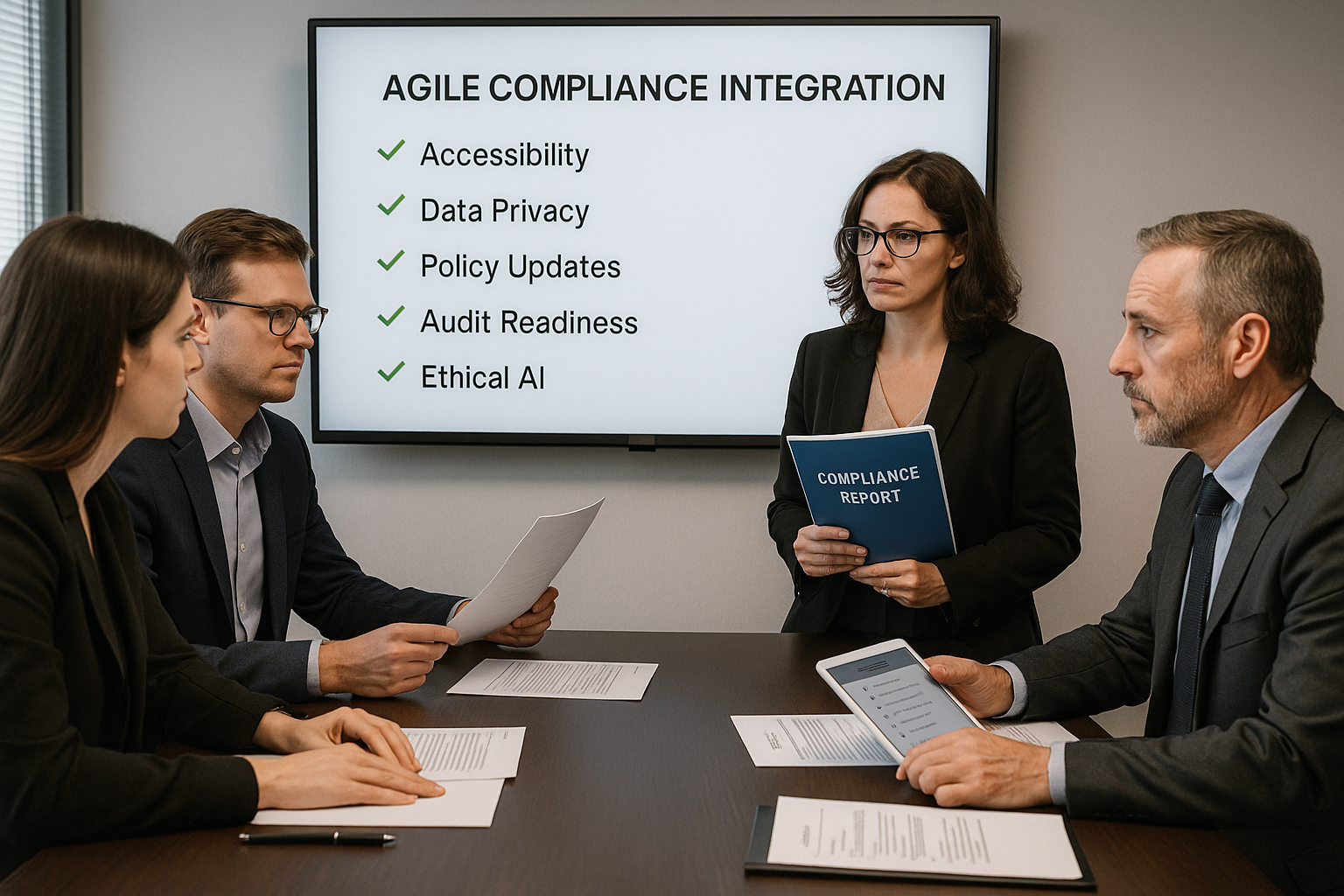In the public sector and other mission-critical environments, modernization initiatives cannot be judged solely on the elegance of their technology. Compliance, legal, regulatory, and ethical, is an inseparable measure of success. Whether the mandate is driven by accessibility standards, data protection laws, procurement regulations, or emerging ethical AI guidelines, adherence is not optional. It is the foundation of legitimacy and the safeguard for public trust.
The challenge is that compliance is rarely static. Laws change, interpretations evolve, and oversight bodies introduce new reporting requirements, often in the middle of multi-year transformation programs. For organizations relying on traditional project methodologies, these shifts can be destabilizing, forcing costly redesigns or even halting implementation.
Agile offers a structural advantage in these policy-driven environments. By embedding compliance into the cadence of delivery, rather than isolating it at the end, Agile ensures that adherence evolves in lockstep with the project itself.
Compliance as a Continuous Discipline
In conventional delivery models, compliance is treated as a stage gate, something to be “checked off” once the system is built. This approach assumes the regulatory environment will remain unchanged from design to deployment, an assumption that is increasingly unrealistic.
Under Agile, compliance is addressed incrementally and iteratively. Each sprint includes formal review points where newly developed functionality is evaluated against the latest applicable laws, standards, and internal policies. This turns compliance from a one-time hurdle into a continuous quality attribute, verified and reinforced at every stage.
For example, a system integrating AI-powered decision-making might be tested for bias mitigation protocols in early sprints, refined in subsequent iterations, and re-tested whenever new ethical AI guidance is issued by oversight bodies. This dynamic posture ensures that by the time the system is fully deployed, it is not only compliant with the law, but it is also aligned with the most current understanding of best practice.
Rapid Adaptation to Policy Change
Regulatory shifts rarely come with the luxury of long lead times. A court ruling, legislative amendment, or funding condition can create new compliance requirements overnight. Agile’s short delivery cycles and flexible prioritization allow project teams to respond immediately, inserting necessary compliance updates into the upcoming sprint backlog.
This adaptability is particularly valuable for organizations working under grant funding or procurement frameworks that stipulate strict reporting and audit requirements. By capturing changes early, Agile teams can ensure that these compliance artifacts, documentation, audit trails, and evidence of stakeholder consultation are built into the deliverable rather than retrofitted later at significant cost.
Transparency and Audit Readiness
In policy-driven environments, compliance is as much about demonstrating adherence as achieving it. Agile’s emphasis on iterative delivery and visible progress creates a natural audit trail. Each sprint review produces tangible artifacts: functional increments, test results, compliance checklists, stakeholder sign-off records.
At Halyard Consulting, we formalize this documentation so it serves a dual purpose, guiding development and satisfying oversight requirements. This approach not only reduces audit preparation time but also reinforces credibility with regulators, funders, and governance boards. The ability to produce real-time evidence of compliance can be a decisive advantage in securing ongoing approvals or funding renewals.
Ethical AI as an Embedded Standard
Compliance in AI-enabled modernization extends beyond codified laws. Ethical considerations, fairness, explainability, and privacy are increasingly viewed as de facto standards. For organizations serving the public interest, failure to address these principles can be as damaging as a statutory violation.
Our Agile framework integrates ethical AI checkpoints into every sprint, ensuring that algorithmic transparency, data minimization, and accessibility considerations are not deferred to post-launch. This proactive stance mitigates reputational risk and positions our clients as leaders in responsible technology adoption.
Conclusion: Resilience Through Compliance Integration
In policy-driven projects, compliance cannot be a peripheral concern or an end-stage hurdle. It must be a structural element of the delivery model, reviewed, validated, and documented with the same rigor as technical functionality. Agile provides the scaffolding for this integration, transforming compliance from a constraint into a source of strategic resilience.
By institutionalizing compliance as a continuous discipline, Agile enables organizations to navigate regulatory complexity without sacrificing momentum. It ensures that when the final deliverable goes live, it is not only operationally effective but also demonstrably lawful, ethical, and worthy of public trust.
Related Reading: Agile at Halyard Consulting: A Strategic Framework for AI-Enabled Transformation

Leave a Reply